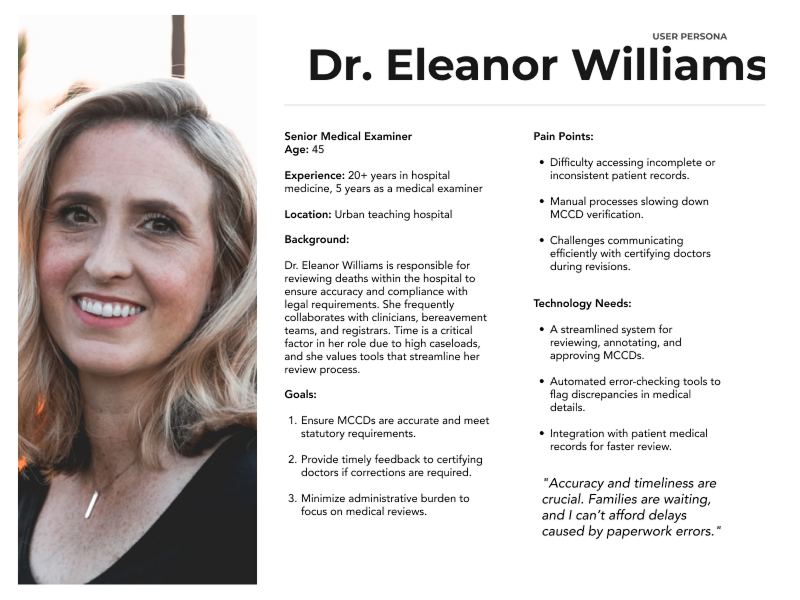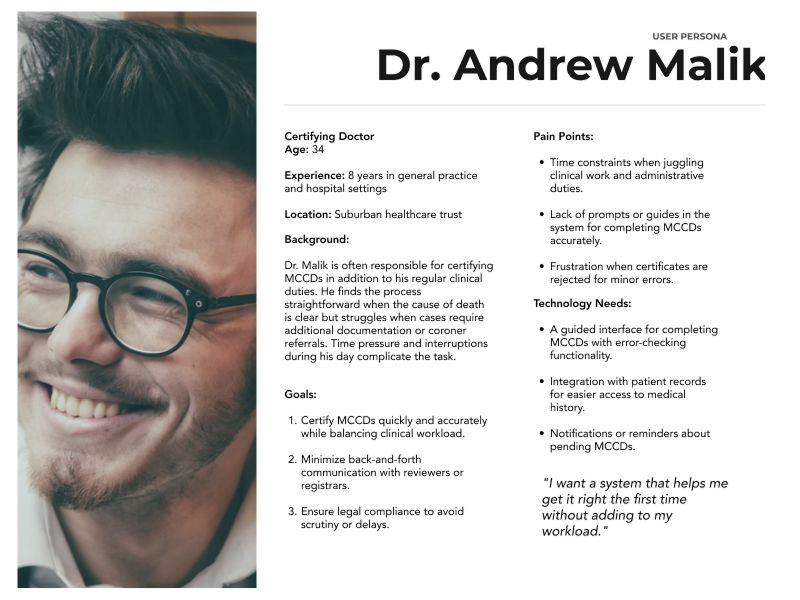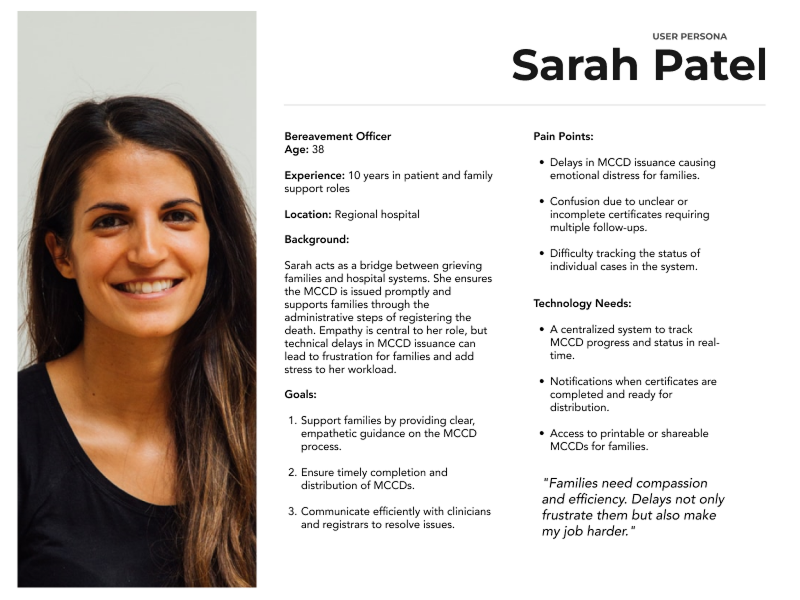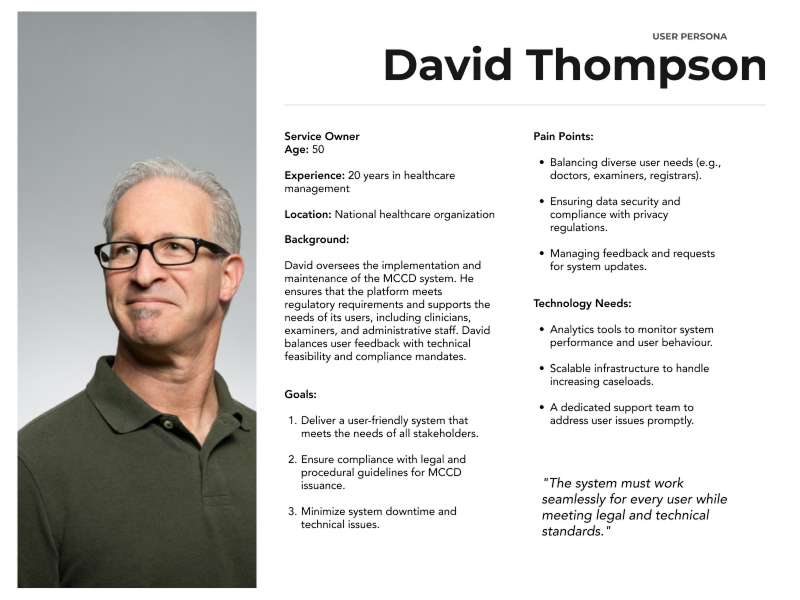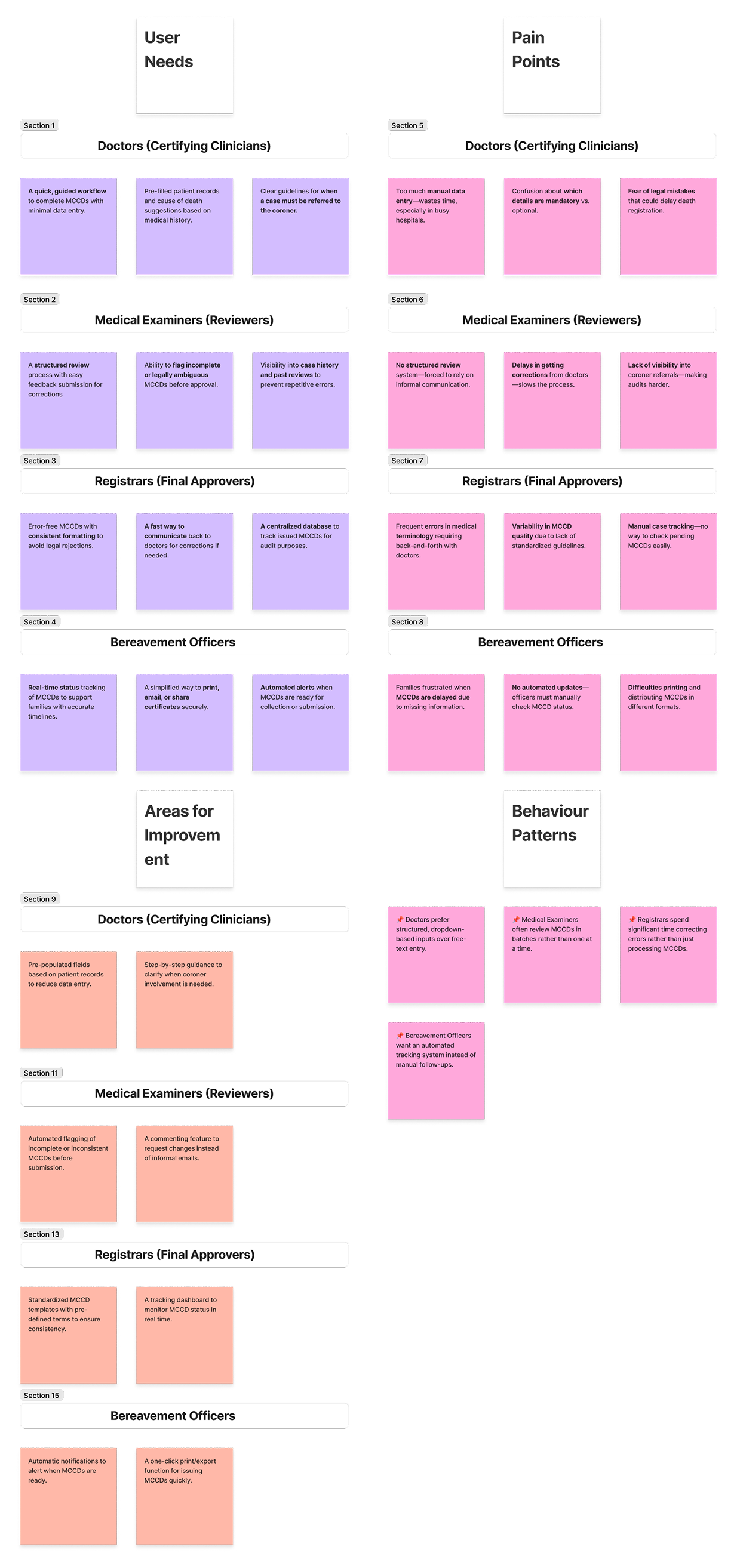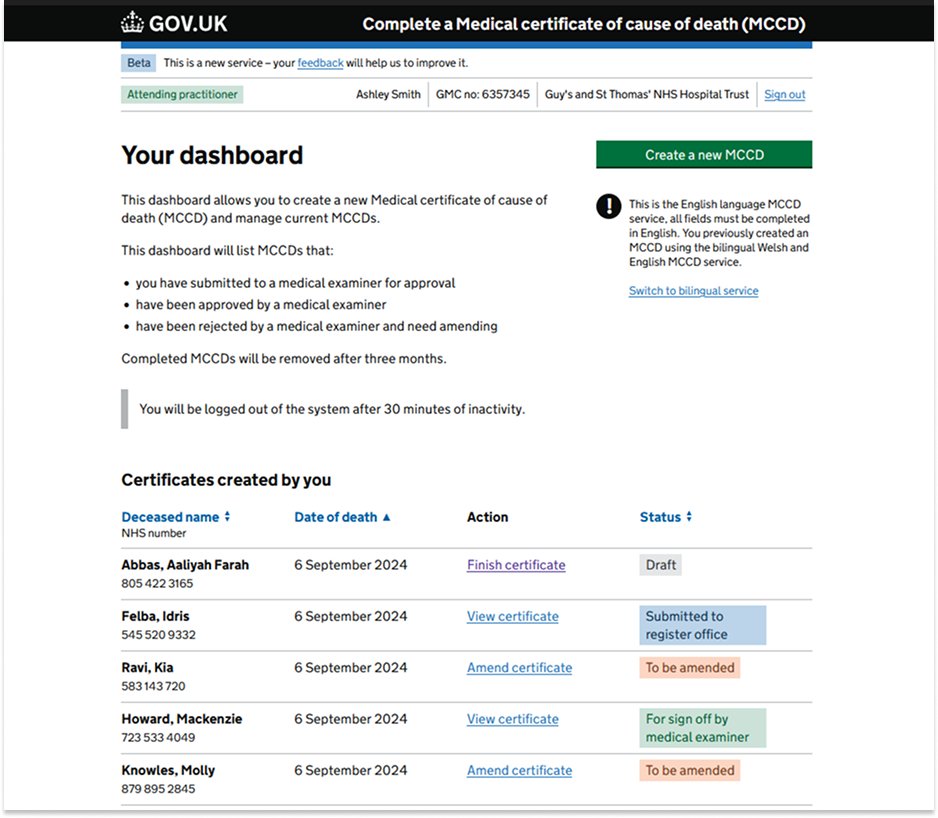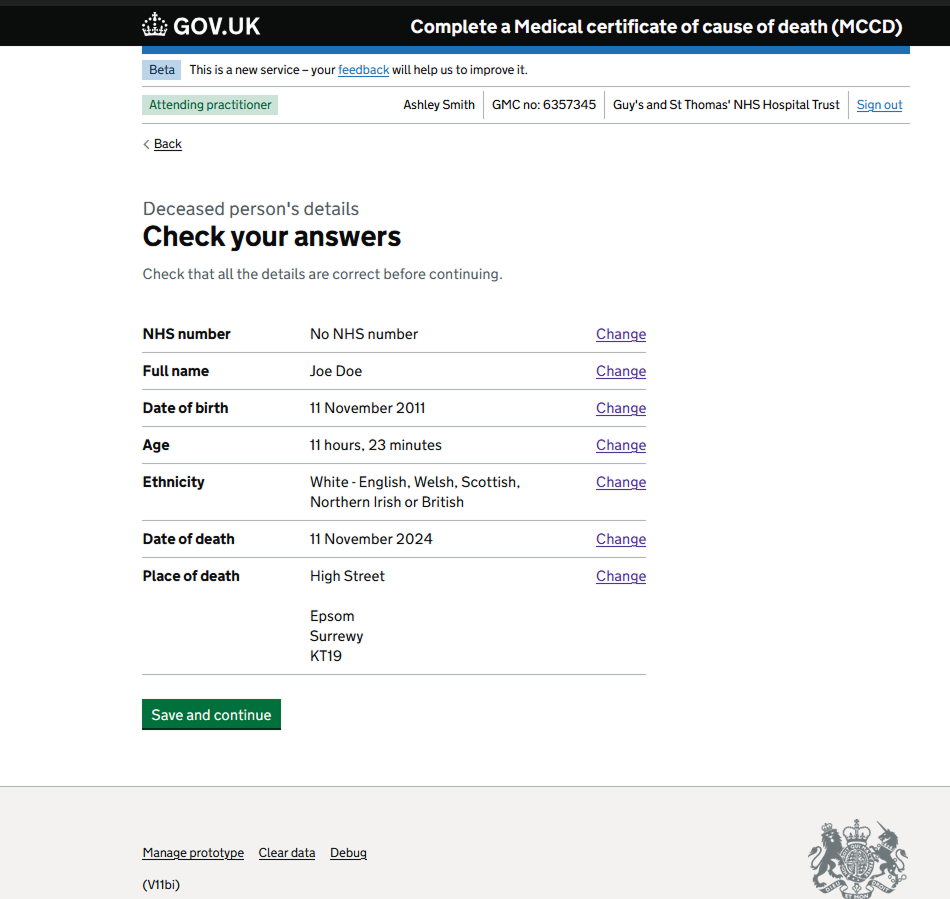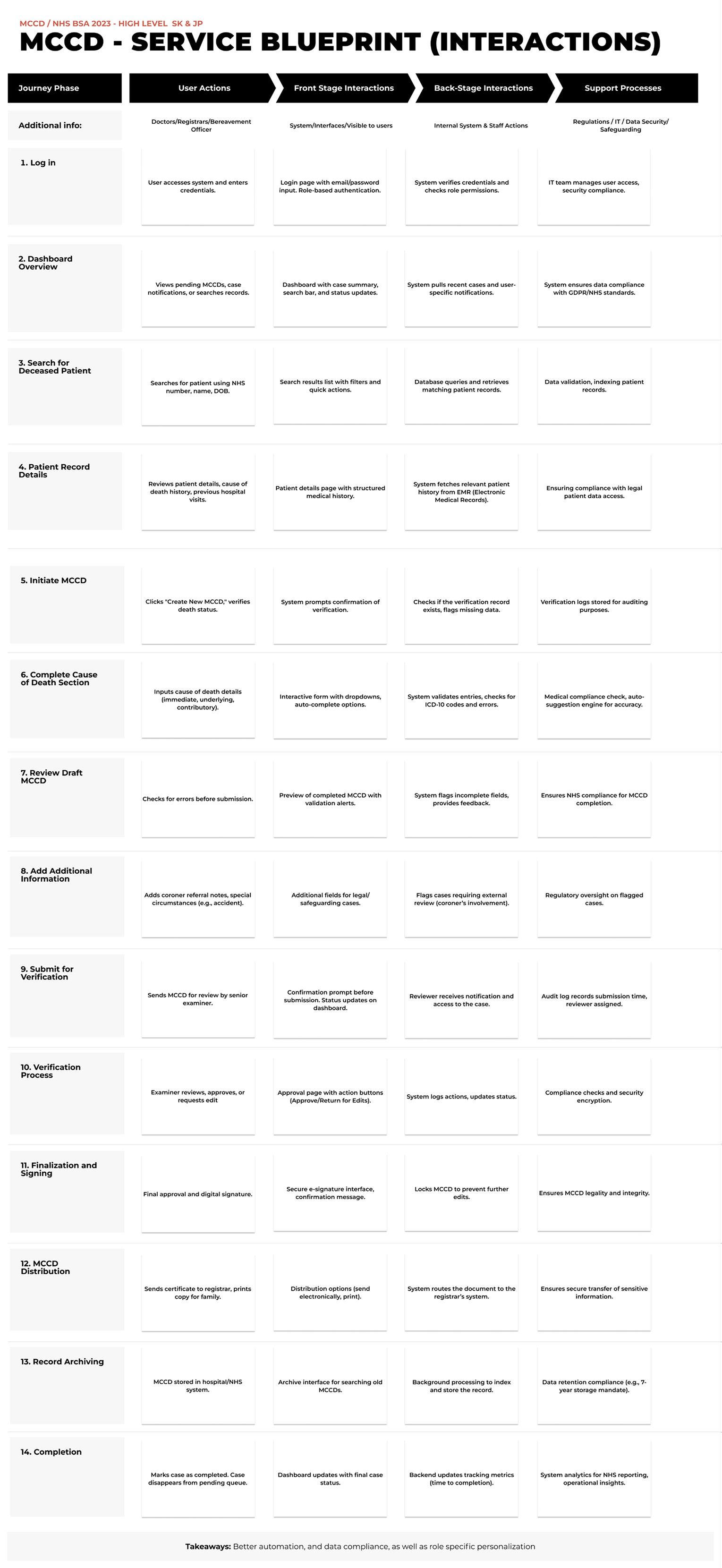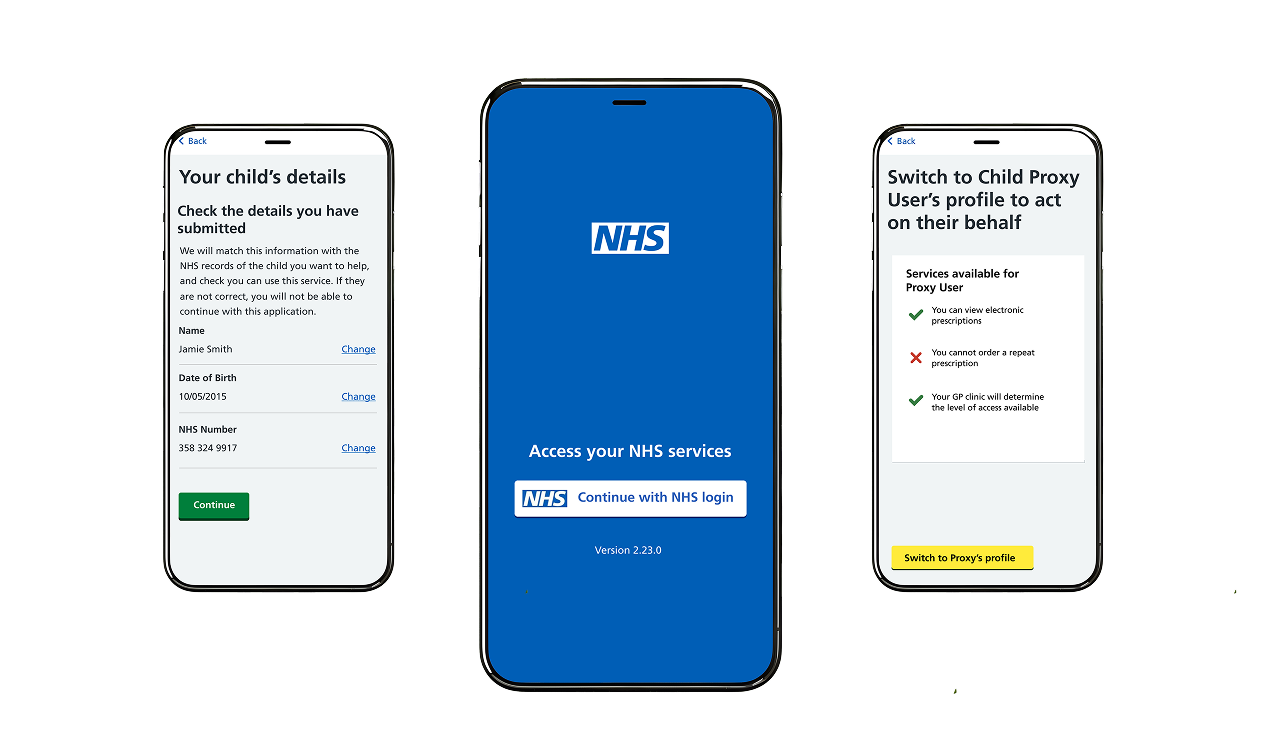Medical Certificate of Cause of Death
NHS digital service that streamlines the legal process of certifying and registering death through an online portal
Problem
The process of issuing and managing MCCD is often time-consuming, error-prone, and involves doctors, medical examiners, registrars, and bereavement officers. Delays and inaccuracies can lead to additional administrative burden as well as emotional distress for grieving families.
Solution
A streamlined, user-centred digital MCCD system that simplifies the process for all roles by providing guided workflows, real-time error validation, role-specific tools, and clear communication channels, ensuring accuracy, compliance, and efficiency.
My Role
Password: NHSBSA
Full time Lead UX Designer, conducting elements of service design, interaction design and user research.
Scope
3+ months in a multi-disciplinary team.
View Gallery
MCCD Design Hypothesis
"We believe that by designing a user-friendly and role-specific MCCD system with guided workflows, real-time validation, and seamless communication tools, stakeholders (doctors, medical examiners, registrars, and bereavement officers) will be able to complete, review, and manage MCCDs more efficiently, with fewer errors and delays, while ensuring compliance with legal and safeguarding requirements."
Supporting Elements in the Hypothesis
1. User-Friendly Interface: Simplified navigation and intuitive design tailored to diverse user needs.
2. Role-Specific Tools: Custom features and workflows for different roles (e.g., doctors focus on medical details, registrars access finalized documents).
3. Real-Time Validation: Immediate feedback to reduce errors in data entry or compliance gaps.
4. Streamlined Communication: Notifications and messaging to improve collaboration and reduce back-and-forth delays.
Understanding the problems about the old process of death certification was the first step for me and the wider team. Learning about the current practices and controversies surrounding the Harold Shipman case was pivotal in structuring the right hypothesis and approach to the project. This is also the second time NHS Business Service Authority (BSA) has attempted to pass the MCCD through the NHS assessment, adding the pressure of getting it right. A large volume of workshops and user research was conducted, but also revised from previous Discoveries and Alphas which didn’t meet the mark. 1This helped with the creation of User Personas, mapping out the high level flow maps and understanding the policy and legal landscapes that would dictate large portions of the project.
User Personas
User Research Insights
Key aspects of this project include understanding the users and their needs, as well as the legal and policy based framework. To support that, I’ve interviewed over 20 clinical professionals and ran 3 extensive workshops with different Consultants from various NHS Trust to receive a wide range of views. This, together with legacy research, formed my insights and high-level plan for the MCCD.
Addressing User Research
Dashboard for reviewing
Key highlight of the user research was to be able to view previous certificates completed by the given practitioner, or assigned to the user (in case of coroners). Historically, this would involve finding the paper file.
With the MCCD, my goal was also to allow for a pick and save approach to work. Permitting users to return to incomplete forms and make adjustments if more fact-finding was necessary, reducing the administrative time if completion of the form was interrupted.
Pathfinding
Users we’ve spoken with were hesitant about submitting the wrong information during the process. This would often stem from doctors submitting the form without having been involved with the patients care directly.
Ensuring the MCCD flows correctly was key. Certain questions will therefore guide users into further questions depending on the circumstances of death. This prevents collection of unnecessary information and ensures that the correct details are correlated in the process.
Checkpoints
To permit quick navigation, GDS format checkpoints will allow users to jump between the various sections, allowing quick change of details as needed.
This also means that medical professionals will have more opportunities to ensure that medical and personal details are error-free which was one of the key concerns coming from interviews.
Welsh language
As part of the discussion with NHS Business Service Authority, aspirations were raised to acknowledge the Welsh language.
This needed considerable work because of the legal policy framework around MCCD, primarily with English as legal language around cause of death and constraints that rose from it.
Working with consultants and the NHS, a solution was identified to permit Welsh language implementation alongside English language entries.
High level flow map
Outlining the user flow prior to wireframing was critical. In the GDS framework, wireframing generally can be very quick (even on high-fidelity ends) as most components are already set, and have well established parameters. However, having an outline of where users could go at each stage was crucial in mapping out the questions order and ensuring policy compliance.
Service blueprint
A key bulk of the work involved creating a service blueprint. Due to the complexity and size of the project work, I was working alongside a Technical Service Designer who focused on service-wide mapping, capturing API, safety and technical level information; whereas I focused on user-based interactions specifically within the MCCD. Below is the high-level service blueprint that assisted me with creating a cohesive digital service that interacts across wider NHS-based touchpoints.





























